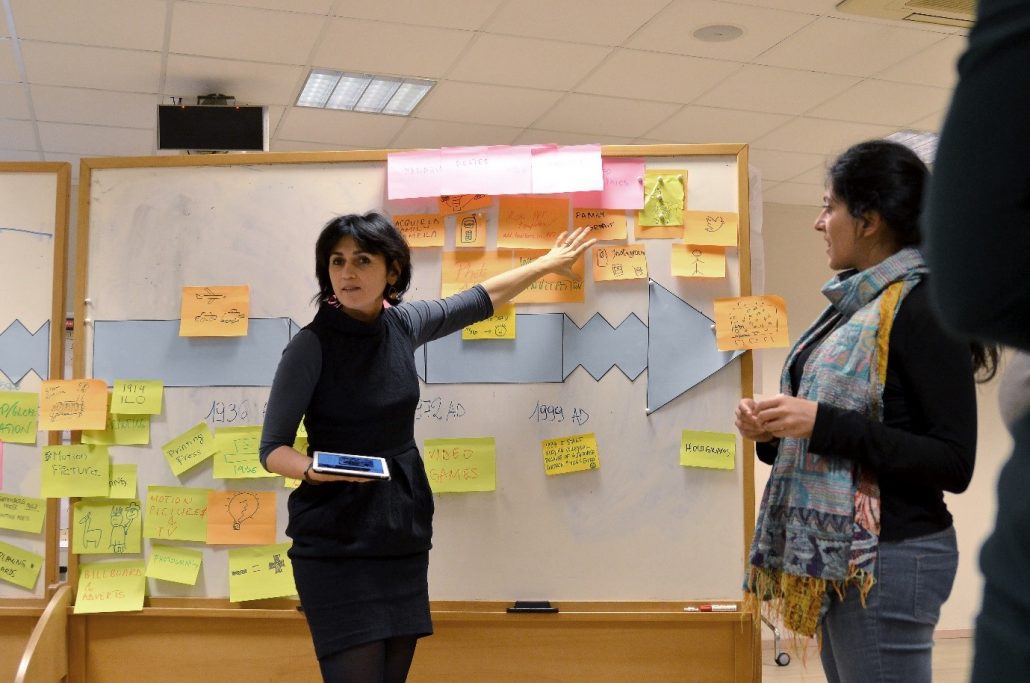Design Storyboards

Define step-by-step elements for bringing meetings to productive endpoints
Overview
Storyboards are sketches depicting significant changes in actions and scenes taking place in a film or television show. A storyboard of group dynamics invites participants to outline all the micro-organizing elements they need to achieve their purpose and to highlight and delete all the common causes of unproductive meetings (such as lack of or unclear common aim, frustrated, antagonistic, absent participants, etc.).
How to use it
- Evoke a purpose that is clear for all.
- Make the work in meetings productive and enjoyable for all.
- Give everyone a chance to make contributions.
- Foster synergy among participants.
- Help everyone find their role by making the design process visible.
- Reveal the weaknesses of the current practice and initiate change.
- Tap all the sources of knowledge for innovation (explicit, tacit, latent/emergent).
How to apply it
Start:
Participants are invited to create a detailed plan, including visual cues, for how the other participants will interact to achieve their purpose. Everyone is involved in the design and planning of the meeting.
Setting:
Run 1-2-All or 1-All in rapid cycles for each step below. (Use the 1-2-4-All method, and skip the groups of 4 stage).
Materials:
An open wall with tapestry paper or flip chart pages, large sticky notes or blank cards.
Time/Steps:
- 2-5 minutes: Help participants to clarify the purpose of their work together (use Five Whys if needed).
- 5-10 minutes: Ask participants to describe the standard approach or microstructure they normally use (including goals and who is normally present) and assess how it succeeds and fails in achieving the stated purpose.
- 2-5 minutes: Encourage participants to re-examine and strengthen the purpose statement if needed.
- 2-5 minutes: Encourage participants to re-examine who needs to participate/be involved and decide if anyone else needs to be included or can be eliminated.
- 2-10 minutes: Decide who will be invited and who will facilitate the meeting or activity.
- 5-10 minutes: If multiple steps are needed, decide on who will make up the design team and arrange a meeting to work on a comprehensive Design Storyboard (see picture). For each meeting the storyboard should define elements like the goal, any activities to run during the meeting, why that activity has been chosen, the steps and timing, and who will be involved.
How to adapt it
- Use the same approach to map ethnographic observations of a current practice.
- Use a pie chart to illuminate the goals and flow of your design.
Tips
- Encourage and seriously play with fast iterations. Repeat and deepen your design.
- At a minimum, work in pairs (as it proves to be very helpful) or small groups.
- Use icons and sketches to quickly develop shared understanding and actionable ideas.
- Always include a design debrief.





